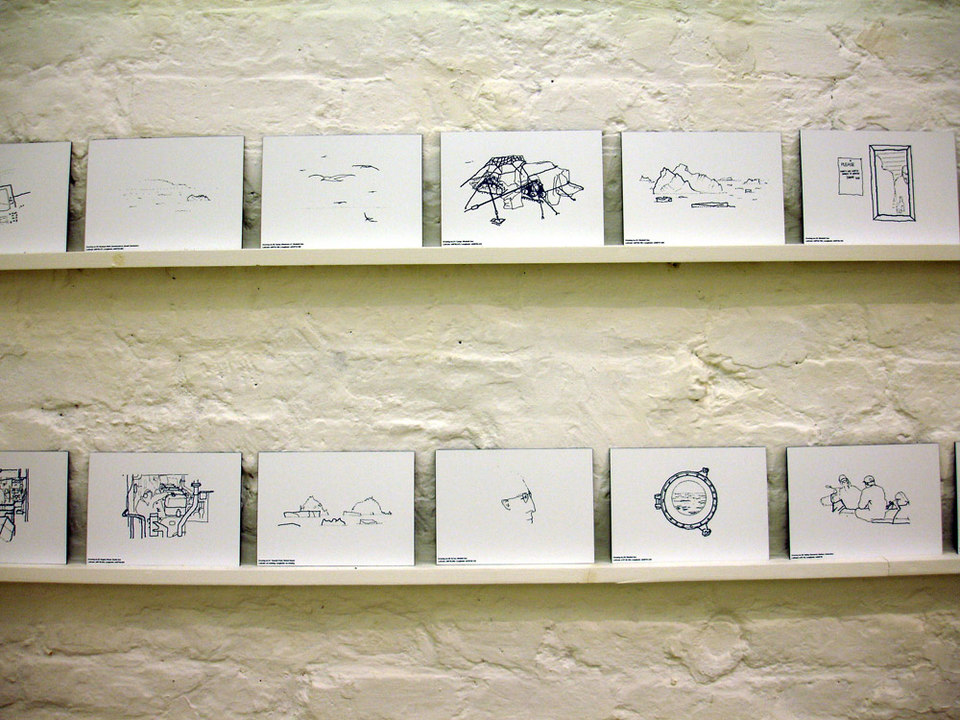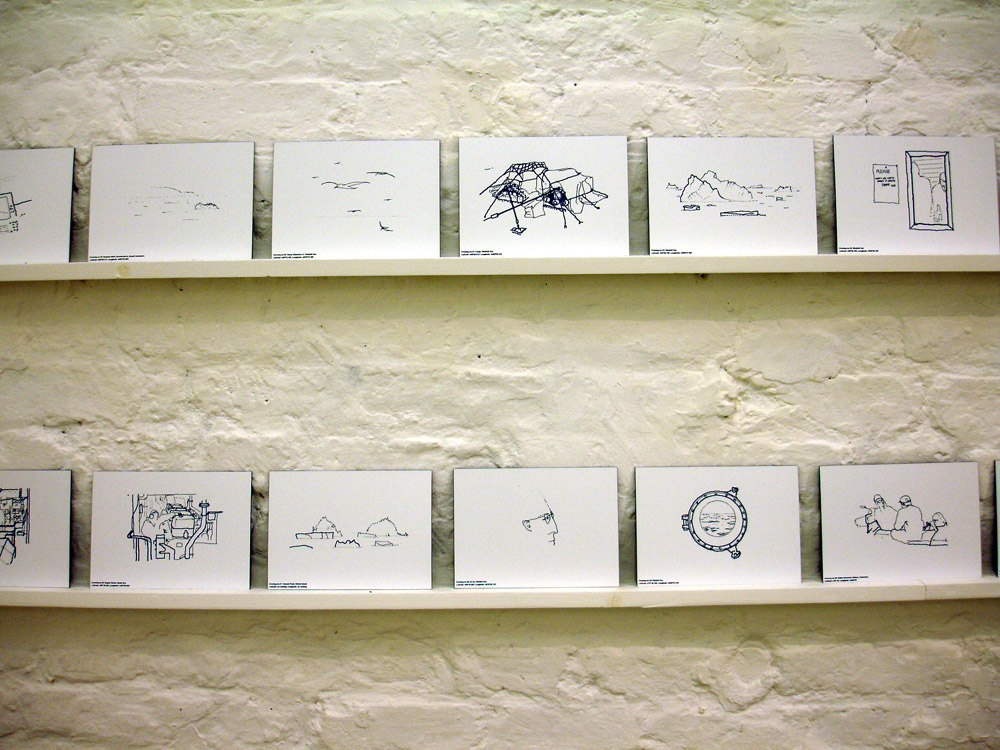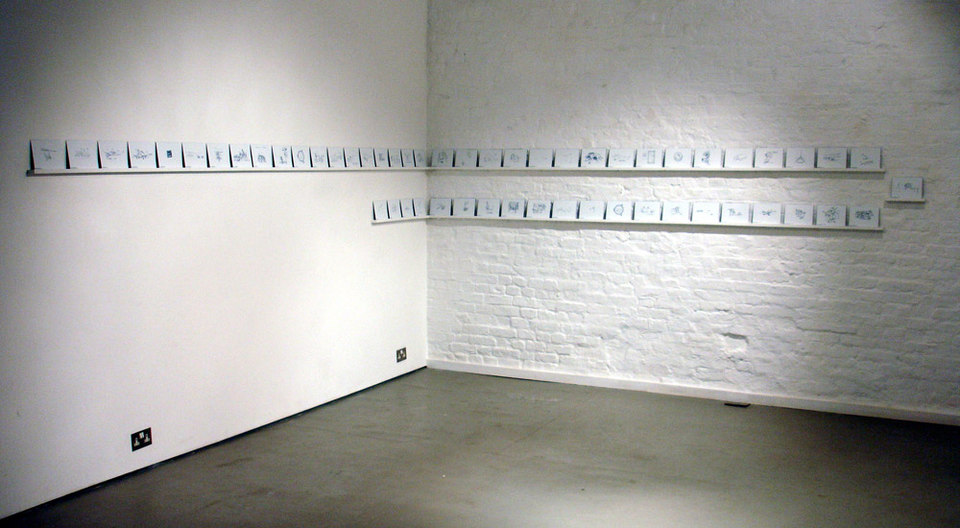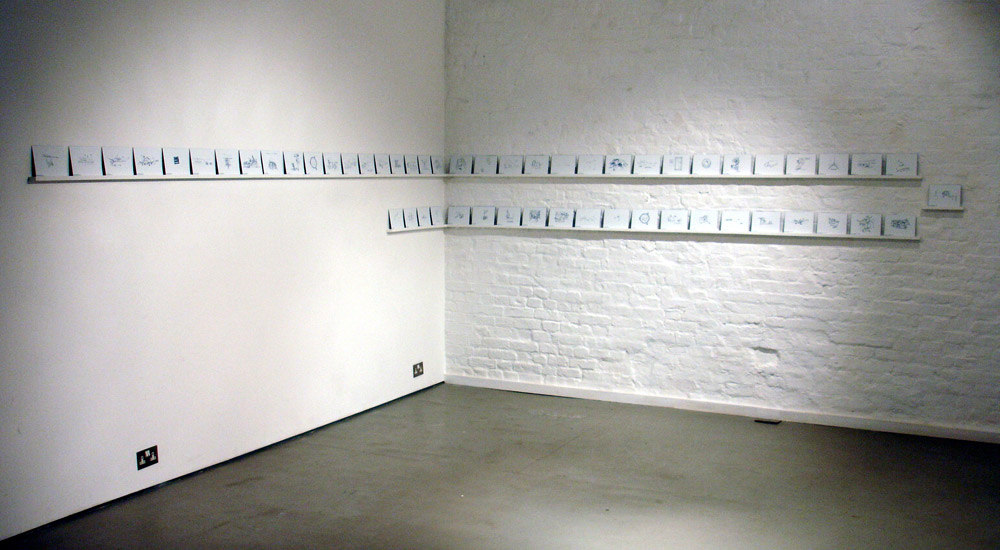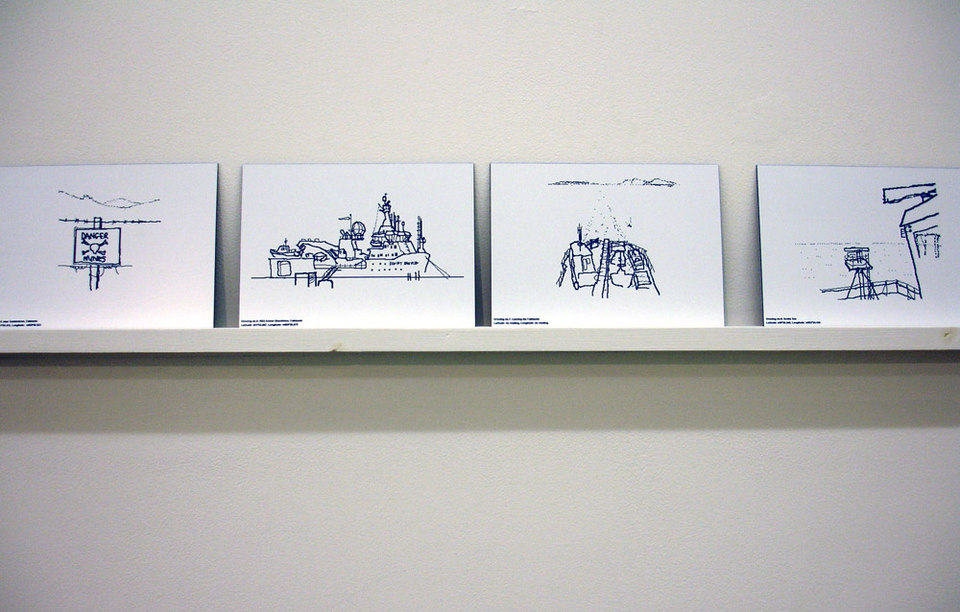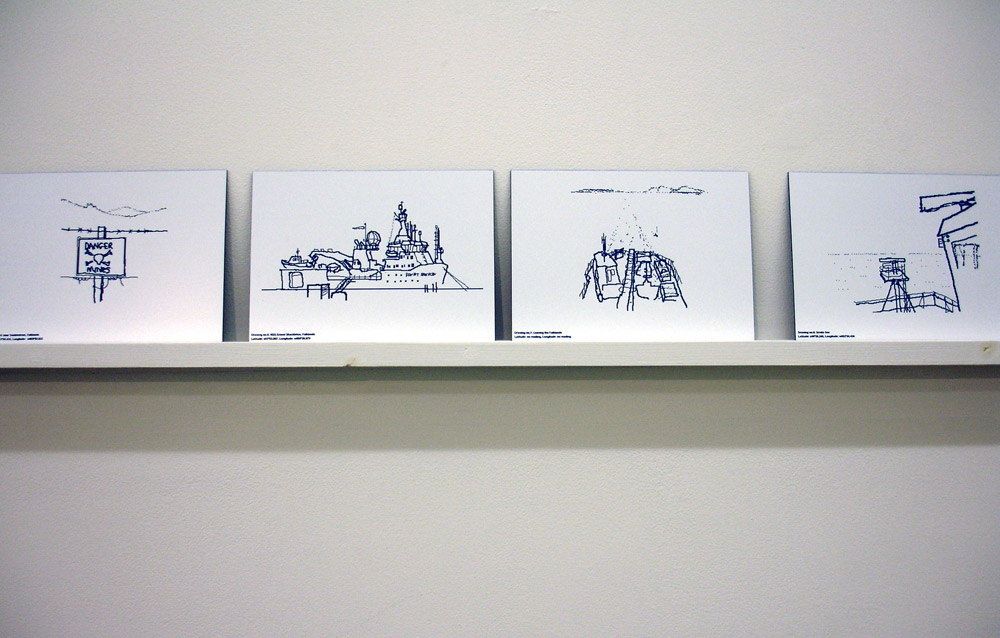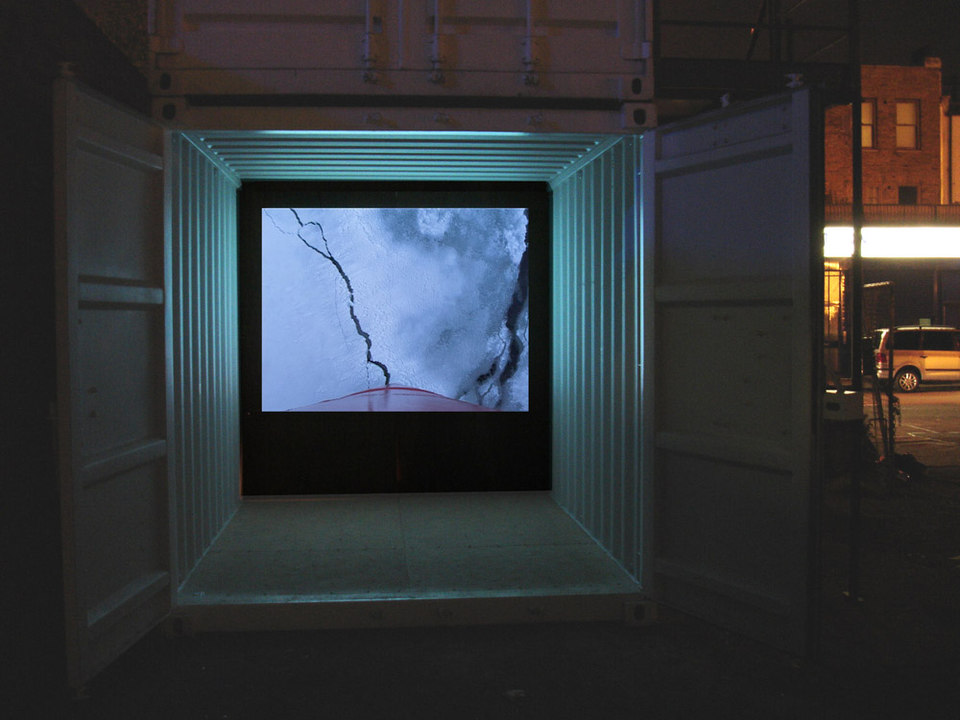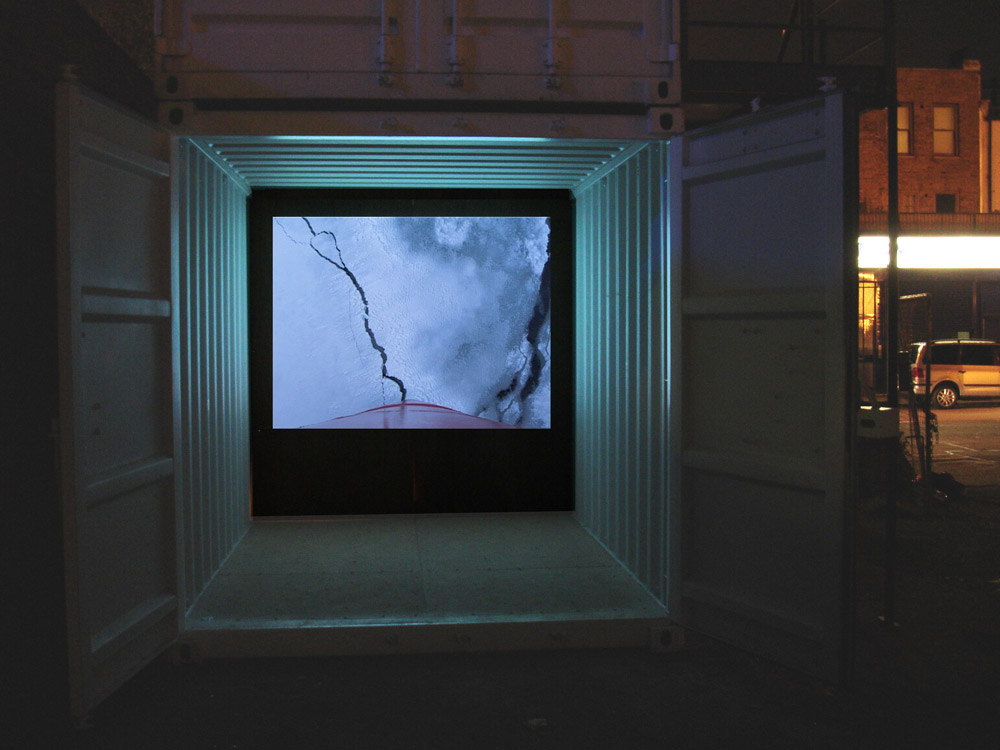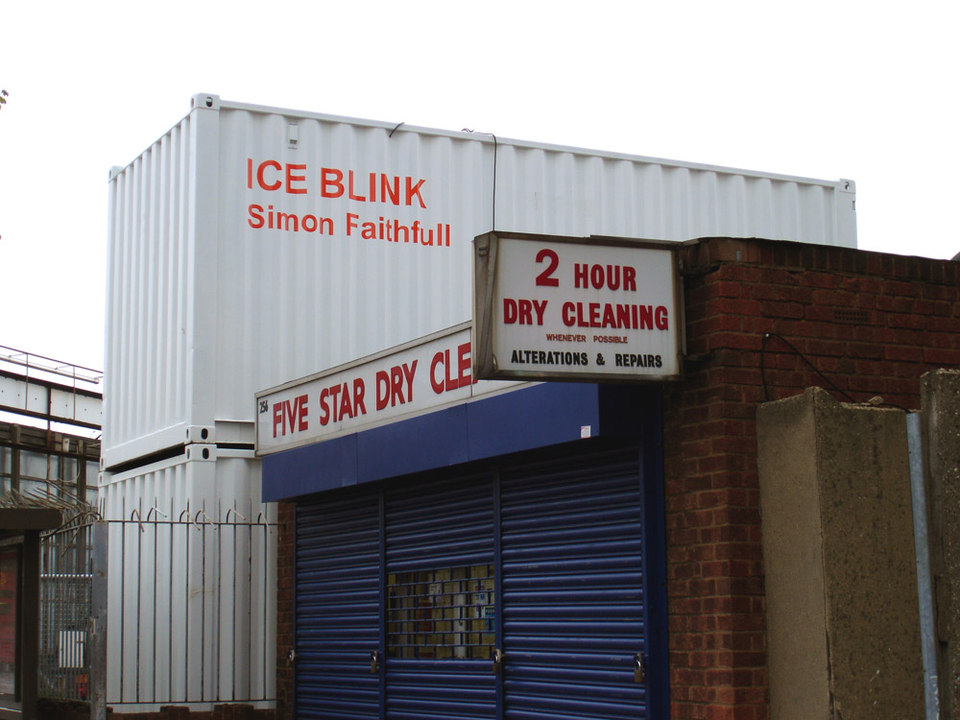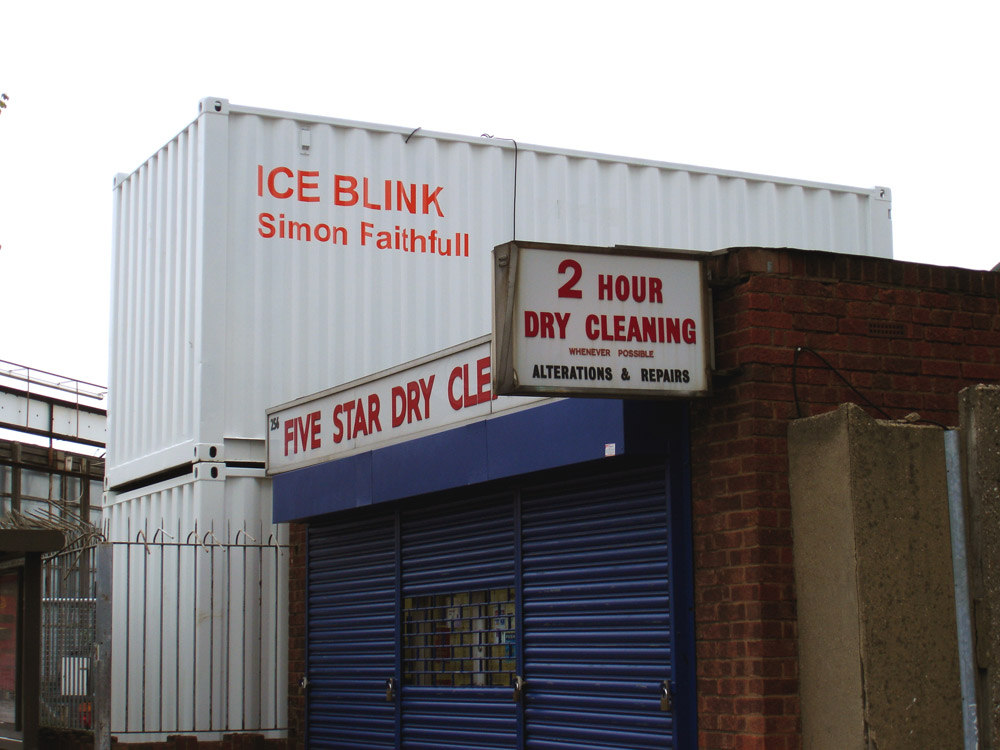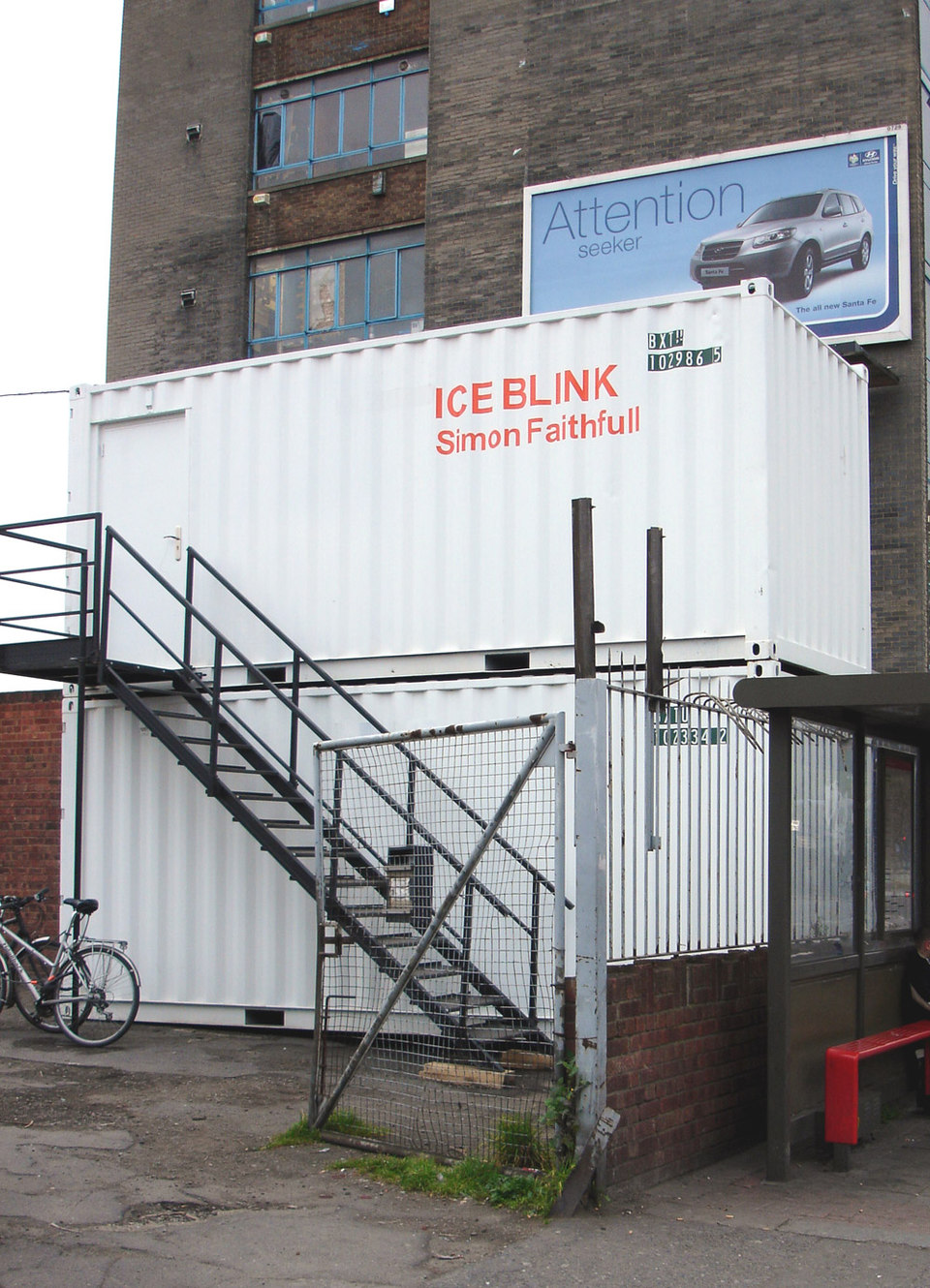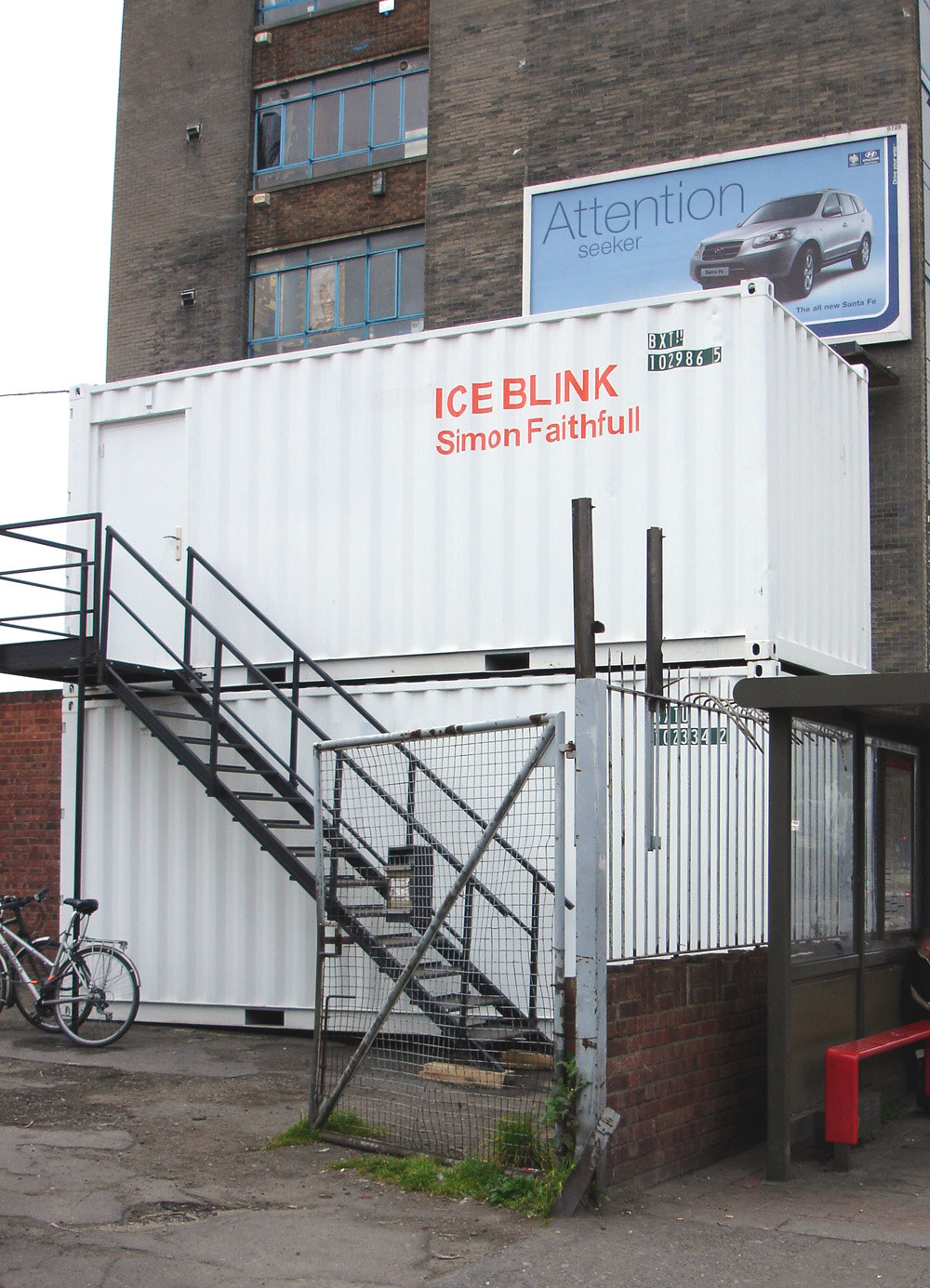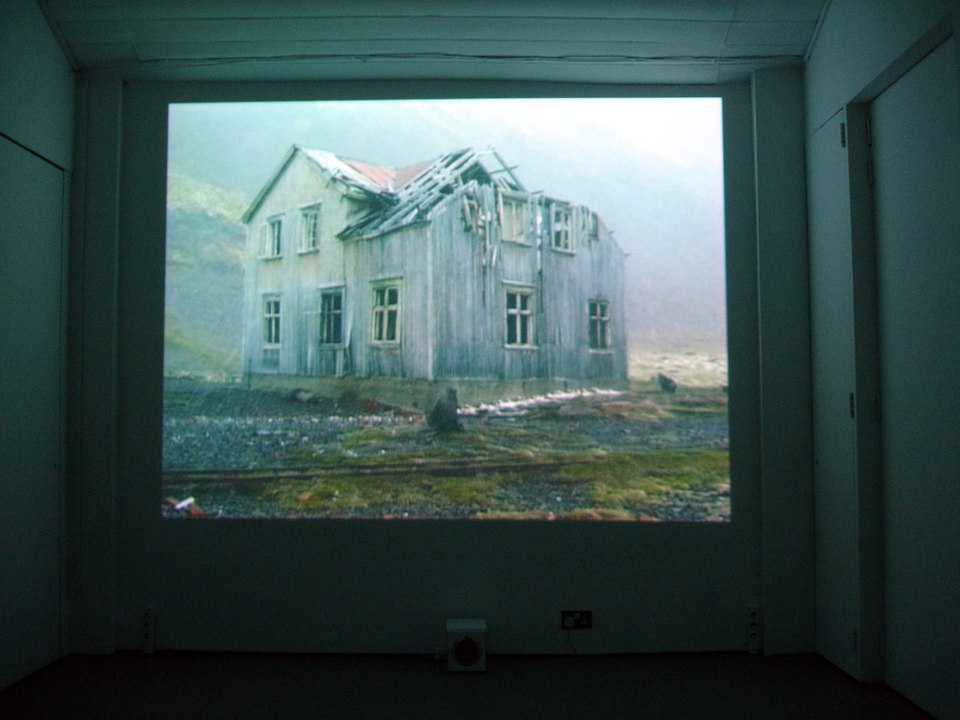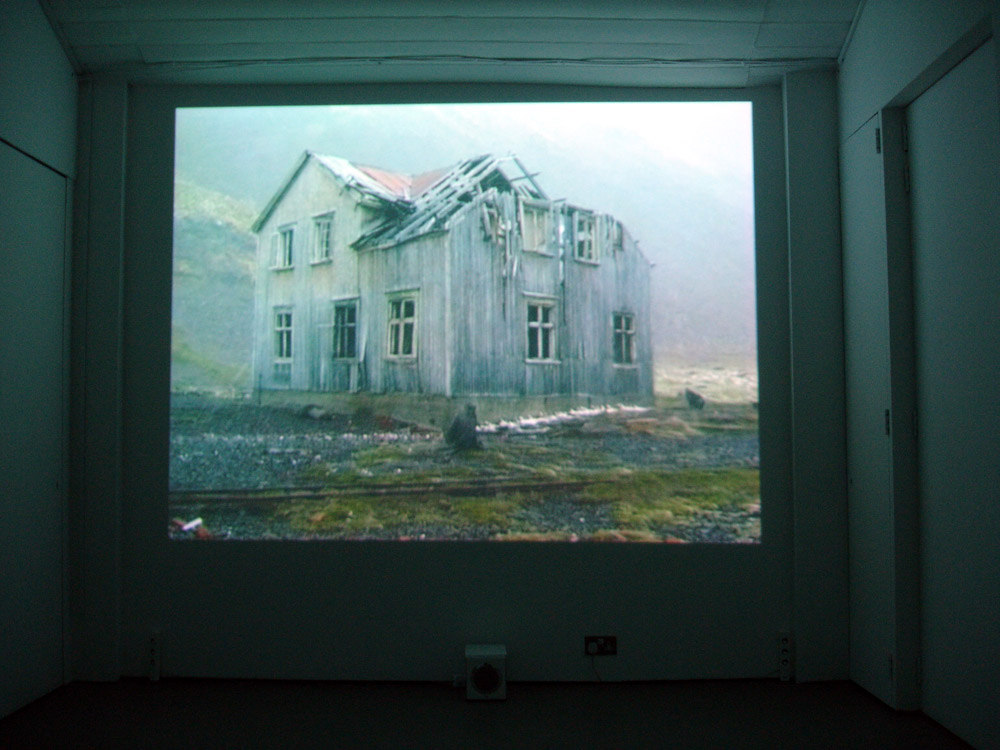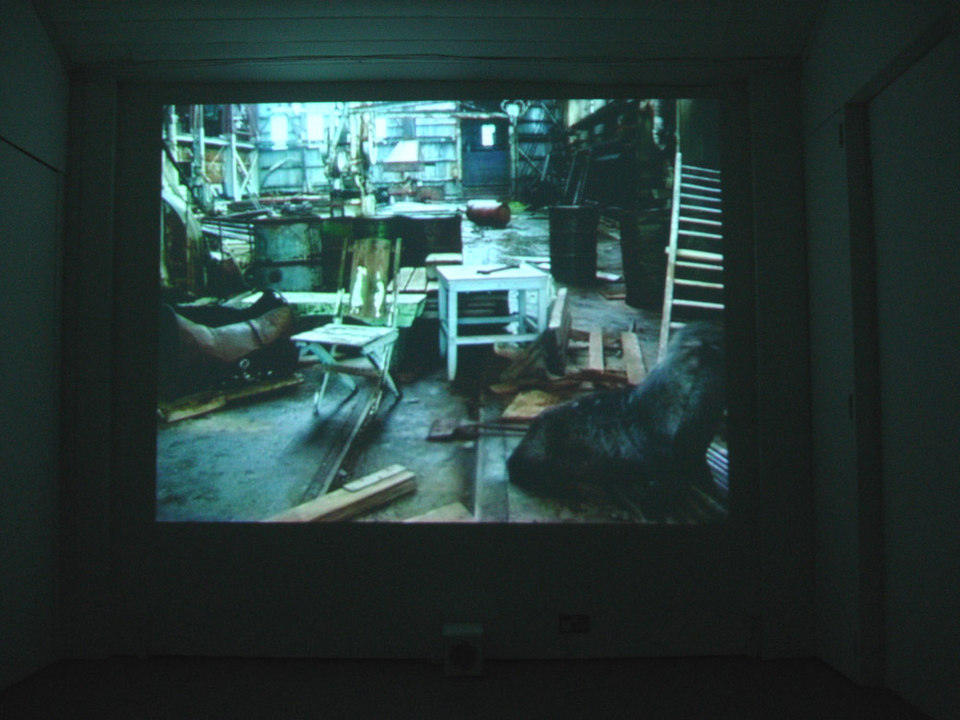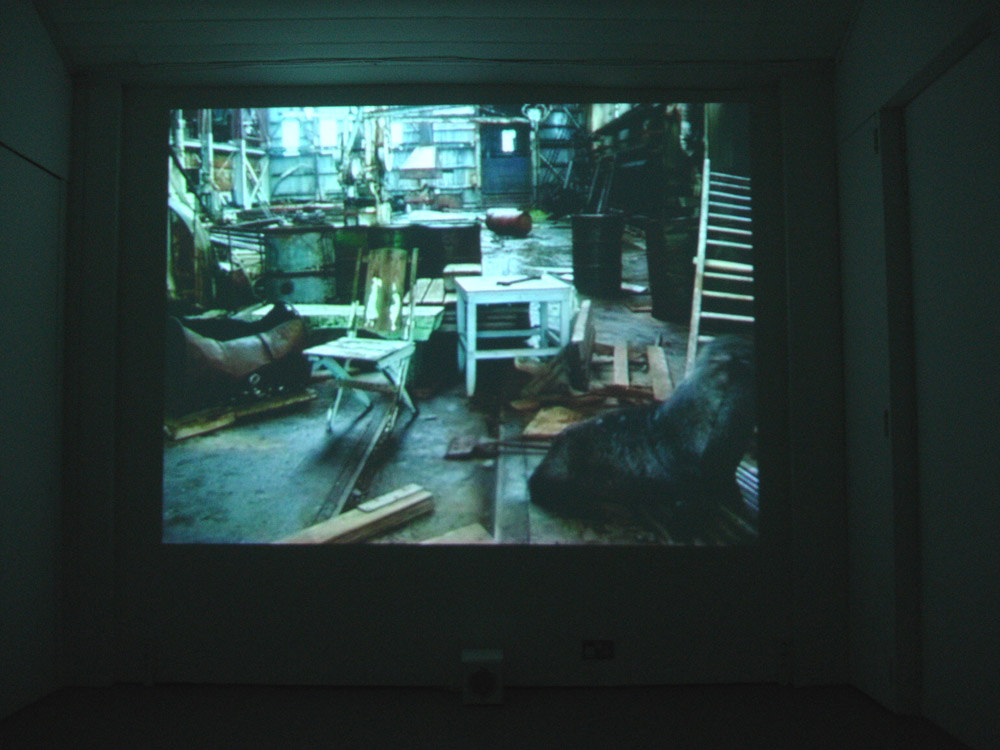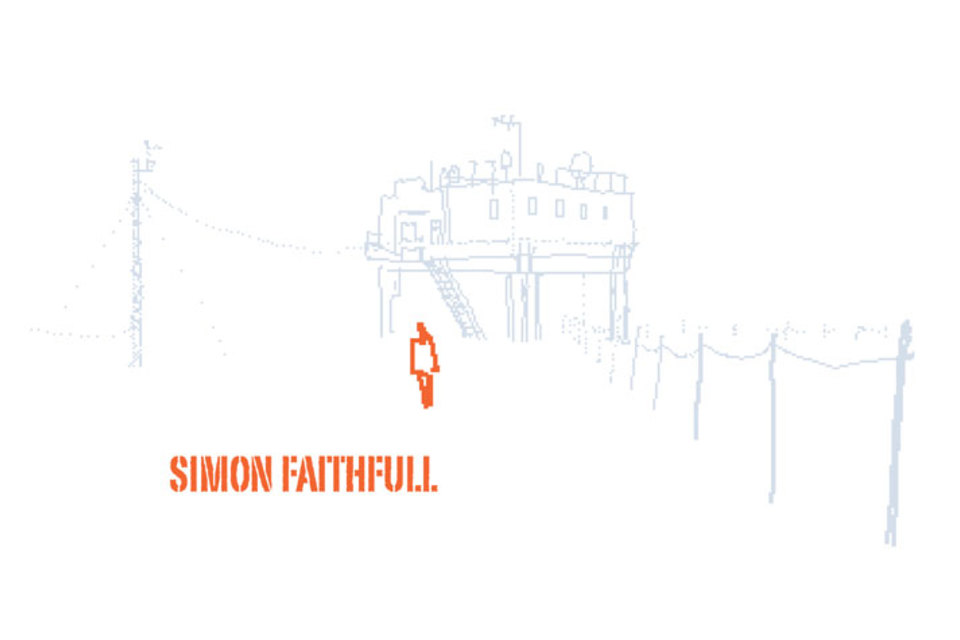
Curated by Lisa Le Feuvre in association with 'Arts Catalyst'
In 2004 British artist Simon Faithfull set out on an epic two-month journey to Antarctica, traveling with the British Antarctic Survey. During the time Faithfull spent in the Antarctic desert, he produced a body of work responding to his fantastic voyage and spectacular surroundings. Ice Blink presents a series of this Antarctic work in three 'overlapping' showings - at Stills in Edinburgh from 18 March-14 May, at Cell Project Space in London from 1-30 April and at Parker's Box, New York from 8 April-8 May 2006.
Departing from RAF Brize Norton, Faithfull travelled onto the Falklands where he joined scientists on board the ice-strengthened ship, RSS Ernest Shackelton. On its way south to Antarctica, following in the path of legendary explorer Shackelton, the ship broke its way through the expanses of sea-ice passing icebergs, ice cliffs and uninhabited islands. On the journey Faithfull was fascinated by the changing lights conditions, such as 'Ice Blink' - a term referring to a white glare that appears on the underside of low clouds in sub-zero sea conditions, indicating the presence of ice beyond the range of vision, warning ships to be on their guard. Finally the ship arrived at the Halley Research Station perched on stilts above the empty white wilderness. Surrounded by inhospitable conditions outside of the vessel, the crew lived within their own set of conventions and references developed over years of exploration, independent of the changing society in the external world.
Whilst on the trip Faithfull produced a live dispatch of daily drawings on a palm pilot which were sent via email to over 3,000 subscribers. Alongside these intuitive recordings Faithfull filmed the view from his porthole, using the window of his small cabin as an autonomous viewing device to show the seemingly unending horizon that was punctuated by islands of ice. On arriving at the Research Station, Faithfull produced a series of photographs revealing how the snow desert defies perceptions of scale, as well as a film documenting a performance where he worked with the scientists to launch a weather balloon.
During the journey the ship stopped at an abandoned whaling station at Stromness, the site where Shackleton and his men finally found civilization. Filming this location, Faithfull shows how it has been repopulated by a colony of seals, taking over buildings once inhabited by humans. On board ship, Faithfull made a film of what appears to be a falling sheet of ice with cracks and fissures developing as the image slides down the screen. In fact this video projection is a single shot looking down at the prow of the boat as it cuts through the pack ice. These works explore Antarctica as a hole in the imagination - a site of myths and fictions, colonial endeavours and the place where the effects of global warming can be watched first hand.
Simon Faithfull has exhibited in numerous exhibitions both in the UK and internationally. Born in 1966, he trained at Reading University and Central St Martins School of Art. He lives in Berlin and London. More details at www.simonfaithfull.org.
In April to accompany the exhibition, Faithfull will deliver a lecture-performance, Ice Blink: An Antarctic Essay where he will tell his story. Ice Blink: An Antarctic Essay Lecture-performance by Simon Faithfull. Book co-published by Book Works and Arts Catalyst Fri 21 April 2006, 6.30pm, Society of Antiquaries, London UK. The lecture moves from topics such as the melting ice cap and the carving of icebergs to perceptual confusions with loss of scale, claiming territories in Antarctica and making gin and tonics with ice a million years old.
Ice Blink: An Antarctic Essay will be published by Book Works in collaboration with The Arts Catalyst in April. Available from Book Works 020 7247 2203 www.bookworks.org.uk. ISBN 1870699920 - Price £13.50
Arts Catalyst is an arts organisation that actively makes connections between art and science through commissions and strategic projects. Since 1993 The Arts Catalyst has worked nationally and internationally to promote understanding and cooperation between the arts and sciences. It seeks new ways to involve artists, scientists and the wider public in a discourse about science in society, its direction and impact.
Ice Blink was researched and developed through an Arts Council England/British Antarctic Survey Fellowship

